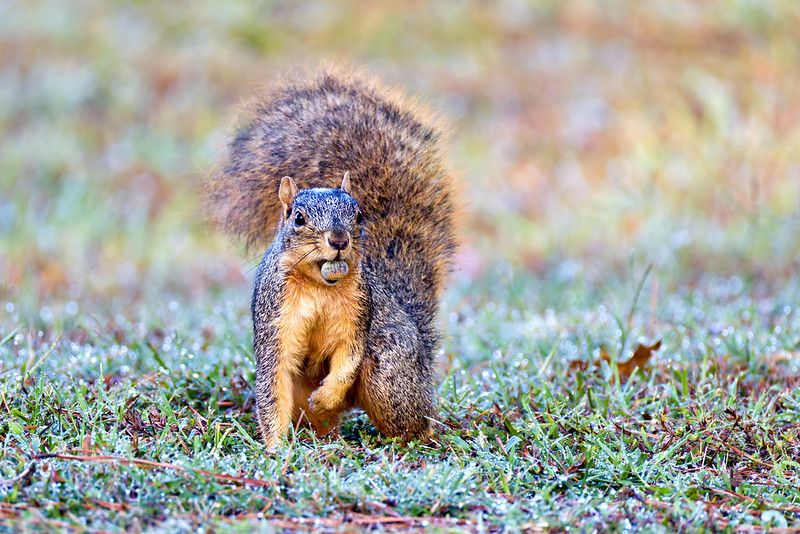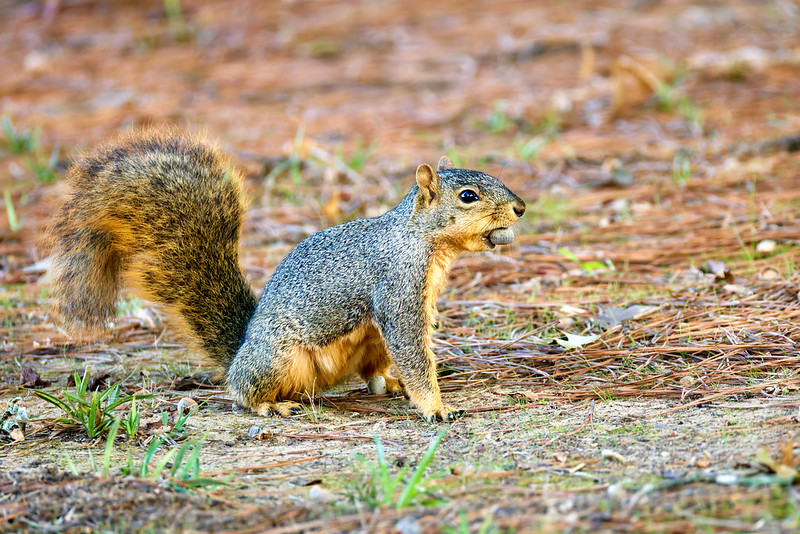The fox squirrels in my yard have been working overtime this first half of October here in Arkansas. With four large oak trees dropping what seems like an unusually heavy crop of acorns, these bushy-tailed foragers are in their element. This year appears to be what’s known as a mast year, and the squirrels are definitely taking advantage.

What a Mast Year Means for Fox Squirrels
When oak trees produce a significantly larger-than-normal acorn crop, it’s called a mast year. This natural event happens every few years among oak and nut-bearing trees. By flooding the habitat with seeds, trees increase the odds that some acorns will survive animal predation and germinate.
Scientists think mast years result from a mix of weather and tree coordination. Temperature and rainfall patterns can trigger synchronized heavy acorn production across a region. For wildlife such as fox squirrels, a mast year means full bellies and better odds of surviving winter.
Based on what I’m seeing in my yard this October, 2025 is shaping up to be one of those years, and the squirrels couldn’t be happier.
Fox Squirrels Mast Year Behavior and Acorn Gathering

Fox squirrels are efficient acorn gatherers. They don’t just eat on the spot; they bury acorns across their territory in a behavior called scatter hoarding. This helps them through winter when food is scarce and also helps oak trees when forgotten acorns sprout into seedlings.
During peak acorn season, I watch them make constant trips between the trees and their hiding spots. They inspect each acorn carefully, keeping the best ones for caching and eating the damaged or insect-infested ones right away.
Read more about my observations in Fox Squirrels and Water: Observations from My Yard
Wildlife Notes on Fox Squirrels in a Mast Year
Fox squirrels (Sciurus niger) are the largest tree squirrels in North America. They weigh up to 3 pounds, with body lengths of 10–15 inches plus a long, bushy tail. The rusty orange and gray tones in these photos are typical of the eastern U.S. population.
They’re most active early and late in the day, when I took these shots. They’re vocal, too, using barks, chatters, and clucks to communicate and defend territories. Their diet centers on nuts, fungi, and seeds, but they’ll also take insects or bird eggs when food is scarce. During a mast year like this, acorns dominate both their diet and their time.
Fox squirrels have excellent spatial memory and a strong sense of smell, helping them relocate many of their cached nuts even under snow and leaf litter.
Photography Notes
Both photos were taken with my Canon EOS R5 Mark II and the Canon RF 200–800mm f/6.3–9 IS USM lens at full zoom. Shooting from a distance kept the squirrels relaxed and behaving naturally.
First Photo (Squirrel Facing Camera):
- 800mm, f/9, 1/400 sec, ISO 3200, +1/3 EV
The shallow depth of field blurred the background and kept the squirrel’s face sharp. Slight positive exposure compensation helped brighten its features under mixed light.
Second Photo (Squirrel in Profile):
- 800mm, f/9, 1/500 sec, ISO 6400, 0 EV
A faster shutter speed froze motion while maintaining detail even at high ISO. Overcast light provided soft shadows and good color balance.
Continuous autofocus with animal eye detection was key, these squirrels never stay still for long. The R5 Mark II tracked their eyes cleanly as they darted between branches and the ground.
